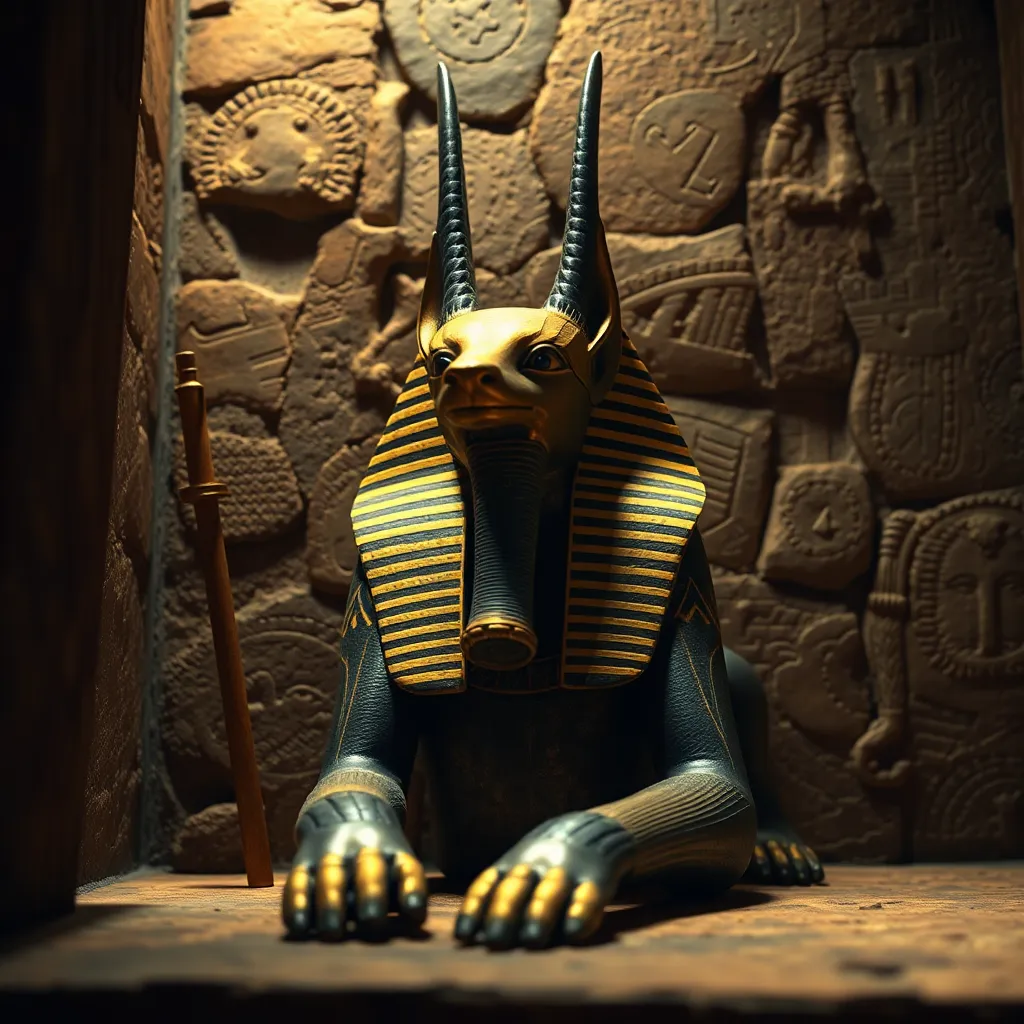Anubis in the Tomb of Tutankhamun: Exploring the God’s Presence in the King’s Burial
I. Introduction
Tutankhamun, often referred to as King Tut, is one of the most iconic figures of ancient Egypt. Ascending to the throne at a young age, his reign was marked by significant religious and political changes. He is most renowned for his nearly intact tomb discovered in 1922, which revealed a wealth of artifacts and deepened our understanding of ancient Egyptian civilization.
Central to the beliefs surrounding death and the afterlife in ancient Egypt was Anubis, the jackal-headed god of mummification and the afterlife. Anubis played a crucial role in guiding souls to the afterlife and ensuring that the deceased were properly prepared for their journey. This article aims to explore Anubis’s representation and significance in the tomb of Tutankhamun, highlighting the god’s integral role in the pharaoh’s burial practices.
II. Historical Context of Tutankhamun’s Reign
The 18th Dynasty of Egypt is often regarded as a high point in ancient Egyptian civilization, characterized by stability, wealth, and monumental achievements in art and architecture. During this era, Egypt experienced significant political changes, including shifts in religious practices, notably the transition back to polytheism after the brief monotheistic reign of Akhenaten.
Tutankhamun ascended to the throne around 1332 BC, succeeding Akhenaten at a time when the country was in turmoil. His reign, although short, was pivotal in restoring traditional worship and stabilizing the nation. The Valley of the Kings served as the royal burial site, and Tutankhamun’s tomb, discovered in the early 20th century, became a symbol of ancient Egypt’s grandeur and the mysteries surrounding its funerary customs.
III. Anubis: The God of the Afterlife
Anubis, known as the god of mummification, had a significant role in ancient Egyptian mythology. His origins can be traced back to the early dynastic period, where he was initially associated with the dead and the protection of graves. With the development of the mummification process, Anubis became closely linked to funerary rites.
Anubis was believed to oversee the mummification process, ensuring that the body was preserved for the afterlife. He was also responsible for guiding souls through the afterlife, weighing their hearts against the feather of Ma’at to determine their fate. The symbolism associated with Anubis, including his jackal form, represents protection and vigilance over the dead.
IV. The Tomb of Tutankhamun: Discovery and Significance
The discovery of Tutankhamun’s tomb by Howard Carter in 1922 marked a monumental moment in archaeology. The tomb, designated KV62, was found almost intact, filled with a trove of treasures that included jewelry, weapons, and the famous gold mask. The layout of the tomb, consisting of several chambers filled with rich artifacts, provided invaluable insight into the burial practices of ancient Egypt.
The significance of this tomb extends beyond its material wealth; it offers a glimpse into the beliefs, customs, and artistry of the period. The artifacts found within illuminate the rituals that surrounded death and the afterlife, showcasing the importance of Anubis in these practices.
V. Anubis’s Iconography in the Tomb
Anubis’s presence is prominently featured within Tutankhamun’s tomb, depicted in various forms across the walls and artifacts. Some notable representations include:
- Wall Paintings: Numerous wall paintings depict Anubis performing rituals, such as overseeing mummification and guiding Tutankhamun’s soul.
- Statues and Figurines: Statues of Anubis, often found in protective stances, showcase his role as the guardian of the dead.
- Canopic Jars: The jars, which held the pharaoh’s internal organs, were guarded by Anubis, emphasizing his protective role in the afterlife journey.
The symbolism of Anubis’s presence in the tomb is profound, reflecting the belief that his guidance was essential for Tutankhamun’s safe passage into the afterlife.
VI. Anubis and the Funerary Rituals for Tutankhamun
The funerary customs practiced during Tutankhamun’s burial were elaborate and deeply rooted in Egyptian tradition. Key elements of these rituals included:
- Mummification: The process of preserving the body, overseen by priests in the service of Anubis.
- Funeral Procession: A ceremonial journey to the tomb, accompanied by rituals invoking Anubis’s protection.
- Burial Offerings: Items placed within the tomb for the afterlife, reflecting the belief in the necessity of provisions in the next world.
Anubis’s role in these rituals is depicted in the tomb’s art, where he is shown performing key functions that ensure the pharaoh’s successful transition to the afterlife. These customs reflect the values of ancient Egyptian society, emphasizing the importance of the afterlife and the protection of the deceased.
VII. Scholarly Interpretations and Theories
Scholarly interpretations of Anubis’s role in Tutankhamun’s tomb vary, with several theories positing different significance levels compared to other pharaohs. Some interpretations suggest that Anubis’s prominence in Tutankhamun’s burial reflects the young king’s need for guidance in the afterlife, considering his early and unexpected death.
Recent research has continued to uncover insights into Anubis’s role, including:
- Comparative Analysis: Studies comparing Tutankhamun’s burial practices with those of other pharaohs highlight unique aspects of his relationship with Anubis.
- Artifact Studies: Ongoing investigations into artifacts associated with Anubis in the tomb reveal deeper meanings behind their placement and symbolism.
As scholarship continues to evolve, the understanding of Anubis’s role within Tutankhamun’s burial remains a vibrant area of research, shedding light on ancient Egyptian beliefs and practices.



